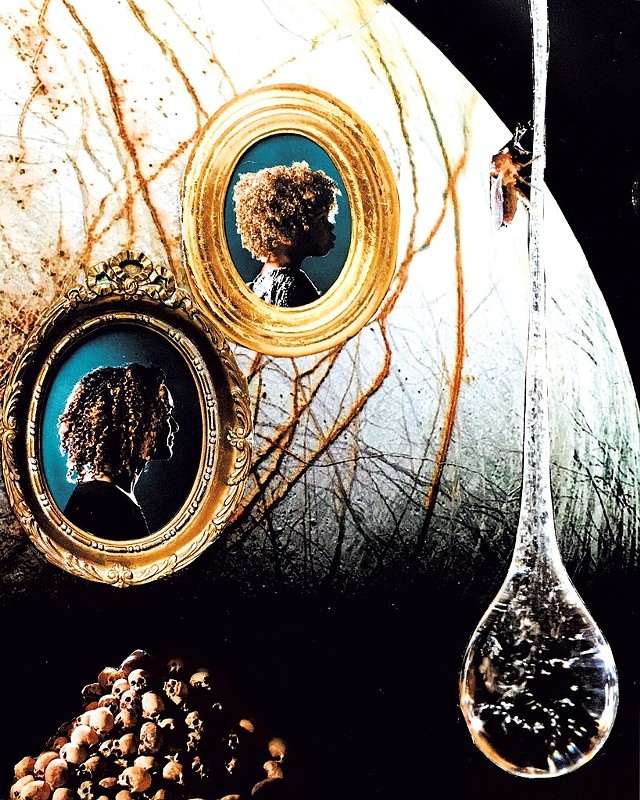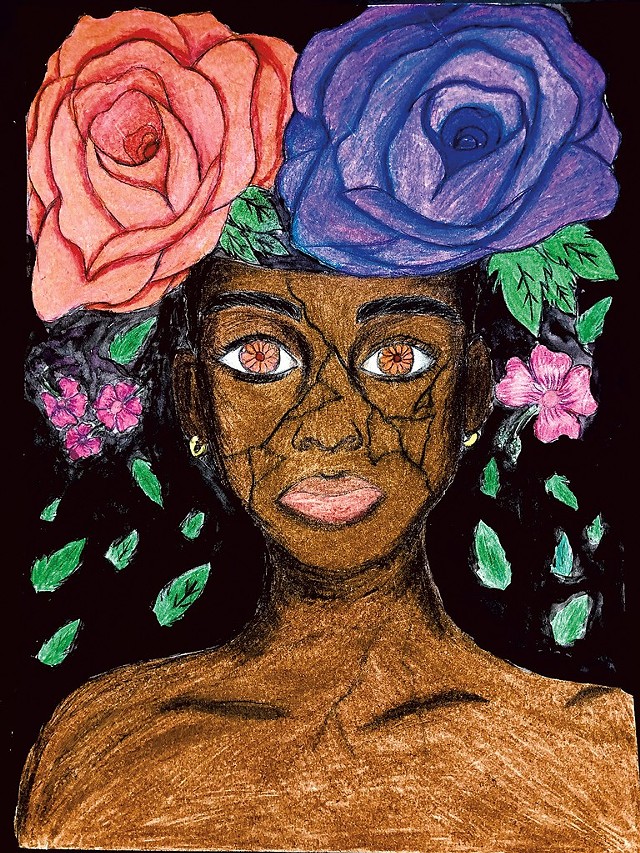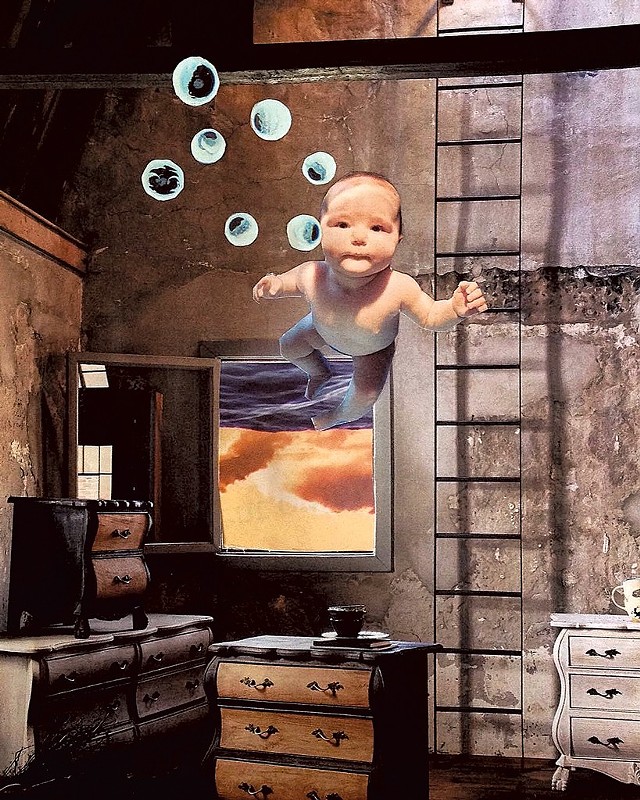
- Courtesy
- "Inheritance" by Hannah, age 14, East Boston, Mass.
Over my nine years of teaching visual art in schools, surrealism has been one of my favorite styles of art to explore with my classes and a consistent student favorite, as well. Surrealism originated as a cultural, literary and artistic movement in the early 1900s, and it aimed to reject the conventional — to break free from the limitations of reality and the conscious, rational mind. The name "surrealism" in and of itself expresses this fundamental goal, with the roots of the word — sur indicating "above" or "beyond," and real meaning "fact" or "reality" — converging to literally mean "beyond reality."
Artists who championed the surrealist movement embraced the bizarre, the strange and uncanny, the unconventional or impossible, and the unconscious. Surrealists like Salvador Dalí, Frida Kahlo, Max Ernst, Dorothea Tanning and Remedios Varo all put paint to canvas to create dreamlike — or sometimes nightmarish — surrealist scenes rife with symbolic meaning. Contemporary surrealist artist Vladimir Kush emulates the surrealist style in his work, as well.
For kids and teens, surrealism presents an opportunity to exercise their imaginations. When pushed to reject or transform the normal and rational, young artists are able to flex their creative muscles, often coming up with far more original and exciting artistic compositions than are possible with realistic landscapes or still-life art.
Surrealism also offers a particularly expressive mode for students, as surrealist artwork can contain symbolism unrestrained by the laws of reality. For example, students might choose to communicate the concept of time by incorporating an hourglass into their artwork; to represent the notion of family with a home or a human heart; or the idea of transformation with a caterpillar and butterfly.

- Courtesy
- "Break Free and Bloom" by Hawa, age 13, Winooski
In one of my favorite surrealist art units, I have students begin by choosing a simple object — a teapot, a pair of headphones, a flower — and inventing a surrealist scene based around it. As they progress, students can build symbolism into the imagery they draw around it or forgo this thought process and simply let their unconscious mind guide them as they create as strange a scene as they can imagine.
Portraiture also lends itself well to surrealism, as young artists can easily transform a portrait to incorporate surrealist qualities by playing with the background or context of the portrait, or transforming aspects of the person portrayed.
Another personal favorite project — and a wonderful, accessible art-making opportunity for children who become frustrated with drawing and painting — is surrealist collage. By using scissors to carefully and closely cut out parts of magazine pictures or photos, then gluing those different pieces onto one background image, young artists can build incredible scenes.
Getting Started: Surrealist Drawing

- Courtesy
- "New Life," by Elsa, age 13, East Boston, Mass.
- Have your young artist choose an object or person to draw.
- Encourage them to sketch out ideas for their surrealist drawing before beginning their final draft. Ask guiding questions.
- How might you change the scale (the size of one thing in relation to another) in your picture to make it surrealist? Could you make something normally small very big, and something normally big smaller? Example: Draw a person or a whole city inside of a glass bottle, or an ocean with a desert island inside of a tea cup. Draw a bottle of soda as tall as a building in a city skyline.
- What would be a very strange or impossible setting in which to find this object or person? Examples: Draw a person's face embedded in the trunk of a tree, or a person underwater. Draw a clock floating in outer space.
- Could you make something in this picture floating or flying that cannot float or fly in real life?
- Can you combine two things in your picture into one, or replace part of an object or person with something else? Example: Replace the sails on a boat with butterfly wings. Replace the leaves on a tree with pages from a book. Replace a person's hair with flowers or fire.
Getting Started: Surrealist Collage
- Gather magazines from which your young artist can choose images to incorporate into their collage.
- Have your young artist select a background image onto which the parts of other pictures will be glued.
- Depending on the child's age, you may wish to model carefully cutting around edges of images for them, or help them with the step of cutting out the parts of their chosen images.
- Have them use a glue stick to glue and attach the pieces of their surrealist collage onto their background images.
- Pro tip: Parts of images can be layered to look more like one surrealist scene. Example: Cutting out the opening of a window or doorway in an image can allow you to layer a different setting underneath. This same trick can also allow you to make it look like a different piece of the picture is entering through the window or door by tucking the cut-out piece underneath the edge of the doorway.
Learn More
- tate.org.uk/art/art-terms/s/surrealism
- tate.org.uk/kids/explore/who-is/who-salvador-dali
- wikiart.org/en/remedios-varo
- wikiart.org/en/leonora-carrington
- wikiart.org/en/vladimir-kush
Please note that many of the most prominent surrealist artists (particularly Salvador Dalí and Frida Kahlo) often incorporated adult themes or imagery into their artwork. Be aware of this when searching online or exploring the topic of surrealist art together.










Comments
Showing 1-1 of 1
Comments are closed.
From 2014-2020, Seven Days allowed readers to comment on all stories posted on our website. While we've appreciated the suggestions and insights, right now Seven Days is prioritizing our core mission — producing high-quality, responsible local journalism — over moderating online debates between readers.
To criticize, correct or praise our reporting, please send us a letter to the editor or send us a tip. We’ll check it out and report the results.
Online comments may return when we have better tech tools for managing them. Thanks for reading.